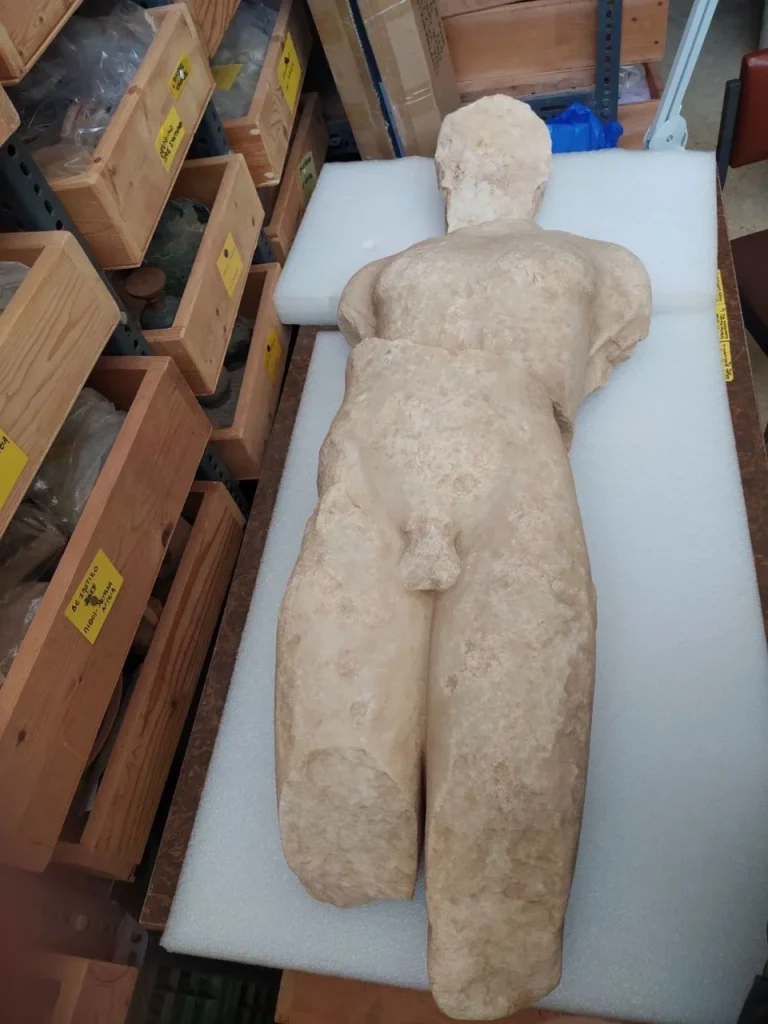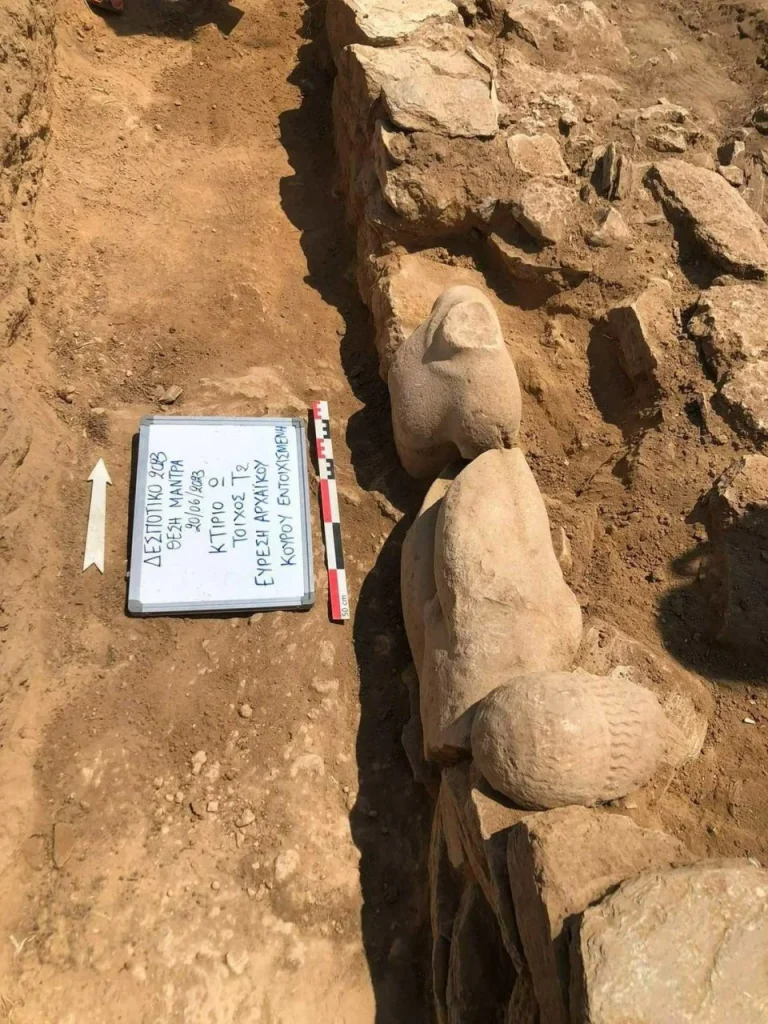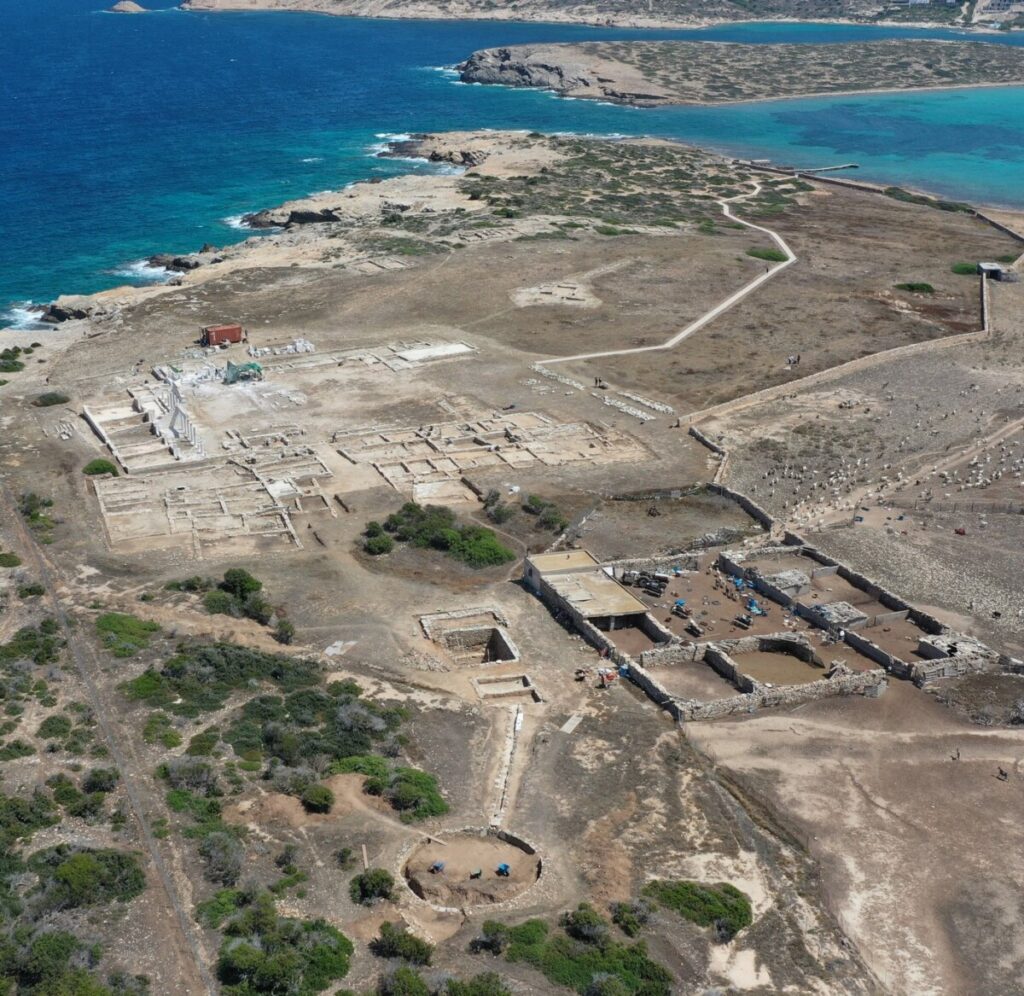Nestled along the shores of Despotiko island, the Mantra archaeological site has become a realm where history's whispers gain volume.
The Greek Ministry of Culture and Sports revealed this enigmatic site through an August 21 news release. A meticulous excavation that began in 2001 has meticulously unearthed layers of time, revealing traces spanning from the Iron Age to the eighth century A.D.
Intriguingly, amidst the remnants of a temple dedicated to the god Apollo, archaeologists uncovered remnants of walls forming what appears to be an entrance hall. Amidst the debris, the pieces of a statue emerged, providing a tantalizing link to the past.
The marble statue, aged approximately 2,480 years, showcased a dignified male figure, standing erect—an embodiment of the Kouros style, as experts in archaeology explained. Yet, this kouros is a fragment of its former self; its upper body and torso have endured the test of time, while its arms, lower legs, and face have surrendered to history.

During the zenith of ancient Greek culture, kouros statues held sway between the sixth and fourth centuries B.C., leaving a legacy as tombstones, monuments, and embodiments of divine entities such as the god Apollo. Apollo, a multifaceted deity who commanded reverence as the god of prophecy, religious law, crops, and the sun, held an esteemed place in the pantheon of gods.
This isn't the first time kouros fragments have graced this island's soil. The archaeologists' meticulous work in the area had previously uncovered fragments of two other kouros statues, setting the stage for a narrative that continues to evolve.
When the ancient Apollo sanctuary at Mantra thrived, these statues stood as custodians of its entrance. Yet, as the tides of time-shifted, the sanctuary fell into disuse, and the statues' fate took a different course. Repurposed as building materials, their silent watch endured through the ages.

Archaeologists excavated new sections of the site’s water management system, including an oval water tank. A photo shows the large, inset structure. Stones line its edges, and a conduit channel runs out of one side.


Despotiko island, a place of mystique and untold stories, resides about 100 miles southeast of Athens, at the southernmost point of mainland Greece.


![Fragments of a kouros of the second half of the 6th BC. century, which were identified as building materials of later construction. [Ministry of Foreign Affairs]](https://greekcitytimes.com/wp-content/uploads/2023/08/b0340fc666206cdef5728d219ab1df8d_Eik.12-1-1170x600.jpg)
